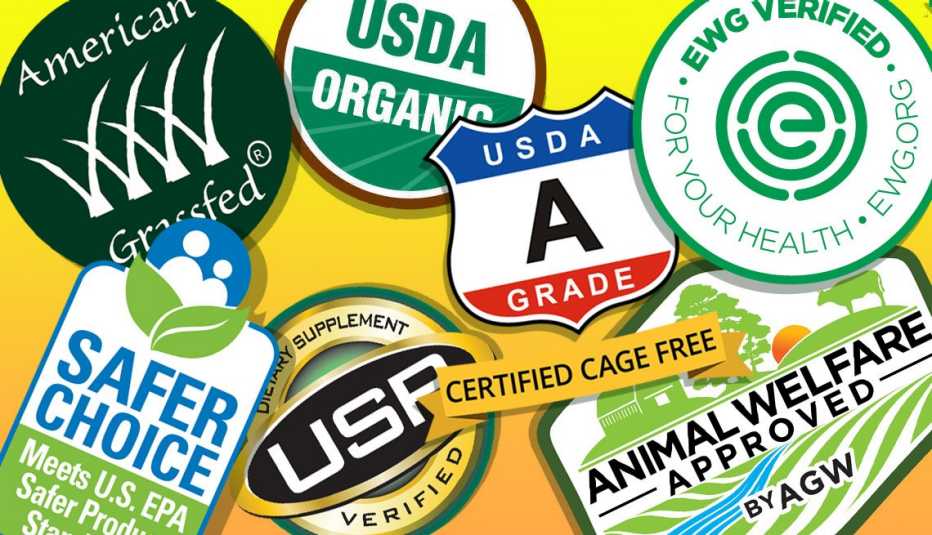Staying Fit


To get you to buy stuff, and pay more for it, marketers increasingly turn to hints of health: labels implying that a product is good for you or the environment. From 2015 to 2019, U.S. sales of consumer goods marketed as eco-friendly grew seven times faster than those of other products, reports the NYU Stern Center for Sustainable Business.
But you don't always have to pay a premium for green products. Often, it comes down to reading ingredient lists and knowing which labels are meaningful, says Erika Schreder, science director at the nonprofit advocacy group Toxic-Free Future. I looked at what some of the most common labels really mean so you can judge whether they're worth it.


AARP Membership— $12 for your first year when you sign up for Automatic Renewal
Get instant access to members-only products and hundreds of discounts, a free second membership, and a subscription to AARP the Magazine.
1. Eggs
More than 70 percent of hens in the U.S. are confined to cages, which troubles many people.
Labels to look for:
- Cage Free Chickens are free to roam during the laying cycle and have unlimited access to food and water, according to the U.S. Department of Agriculture. But chickens might be crowded indoors.
- Free Range (or Free Roaming) Hens are uncaged, have unlimited access to food and water, and access to the outdoors. But that outside space might be just a small patch of concrete.
- Animal Welfare Approved (AWA) The ultimate in chicken freedom! Chickens always have space to roam around outdoors. This label is found mostly on eggs from smaller farms.
- Organic. Chickens are raised without antibiotics and fed an organic diet without pesticides or fertilizers. There are no guarantees about living conditions, other than that chickens must have access to the outdoors.
2. Beef
The USDA grades beef this way: prime (a lot of marbling, or fat interspersed with lean meat), choice (less marbling) and select (even less). But there's more to see.
Labels to look for:
- No antibiotics The USDA certifies that the cattle were raised without these drugs, which have been linked to a rise in antibiotic- resistant illnesses in humans.
- American Grassfed or Food Alliance Certified Grassfed Cattle ate only grass, unlike most beef cattle, which are fattened up on grains. No hormones or antibiotics were used to promote this growth.
- Organic Animals were raised with no antibiotics or hormones, and ate only organic feed and food they found themselves. They were also free to graze in a pasture.
- Antibiotic-free Ignore this. All beef, by the time you eat it, should be free of antibiotics.


3. Personal care
Be aware that the U.S. doesn't regulate these products for safety as it does with medications.

































































More on Health
Decoding the New Food Labels
You'll see bigger serving sizes and major shifts on sugar and fats in 2020Should You Toss That Food? Let Your Senses Help You Decide
As the FDA considers changing 'best by' labels, here's how to take control of your fridgeIs Food as Healthy and Tasty as It Used to Be?
Coronavirus shortages prompt a foodie to reflect on 50 years of change